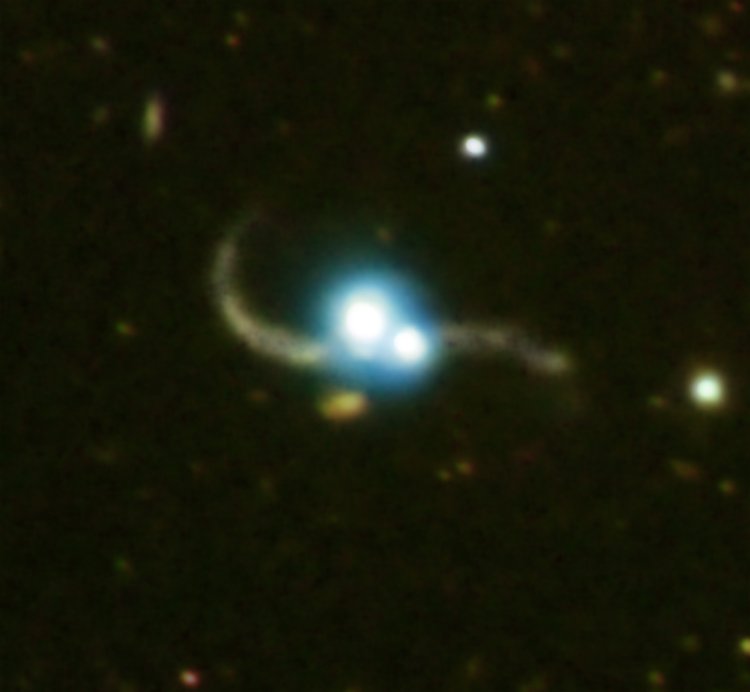
 Credit: X-ray (NASA/CXC/SAO/P. Green et al.), Optical (Carnegie Obs./Magellan/W.Baade Telescope/J.S.Mulchaey et al.)
Credit: X-ray (NASA/CXC/SAO/P. Green et al.), Optical (Carnegie Obs./Magellan/W.Baade Telescope/J.S.Mulchaey et al.)
Togetherness
Galaxies are gregarious. They exist in clusters, and as they swarm around they interact gravitationally. Mergers of galaxies are quite common, like the well-known, beautiful Antenna Galaxies. Tidal tails produced as the galaxies pass through each other, spraying out stars and star-stuff, provide clear evidence of the gravitational interaction. In the early Universe, when galaxies were much closer together, galaxy mergers should have been much more common. Since most if not all galaxies harbor supermassive black holes at their centers, galaxy mergers should lead to the eventual merger and growth of the central supermassive black holes. Astronomers have seen evidence of binary black holes suggesting that this process does indeed take place. But new observations with the Chandra X-ray Observatory and the 6.5 meter Baade-Magellan telescope at the Las Campanas observatory in Chile have provided the best evidence to date of the presence of binary black holes in merging galaxies. The image above is a composite X-ray and optical image of a binary quasar called SDSS J1254+0846 (since it was initially detected in the Sloan Digital Sky Survey). This object is a quasar since it houses two black holes that are feeding voraciously from the interstellar gas (and stars, and planetary systems?) in their neighborhoods. The Chandra image, in blue-white, clearly shows strong X-ray emission being generated by the two black holes. A deep followup observation by the Baade-Magellan telescope shows two tidal tails, proof positive that these binary quasars exist in two merging galaxies. In the distant future the two supermassive black holes may themselves spiral together, producing a huge outburst of gravitational radiation.
Published: February 15, 2010
<
HEA Dictionary ● Archive
● Search HEAPOW
● Other Languages
● HEAPOW on Facebook
● Download all Images
● Education ● HEAD
>

Each week the HEASARC
brings you new, exciting and beautiful images from X-ray and Gamma ray
astronomy. Check back each week and be sure to check out the HEAPOW archive!
Page Author: Dr. Michael F. Corcoran
Last modified Monday, 26-Feb-2024 17:09:59 EST


